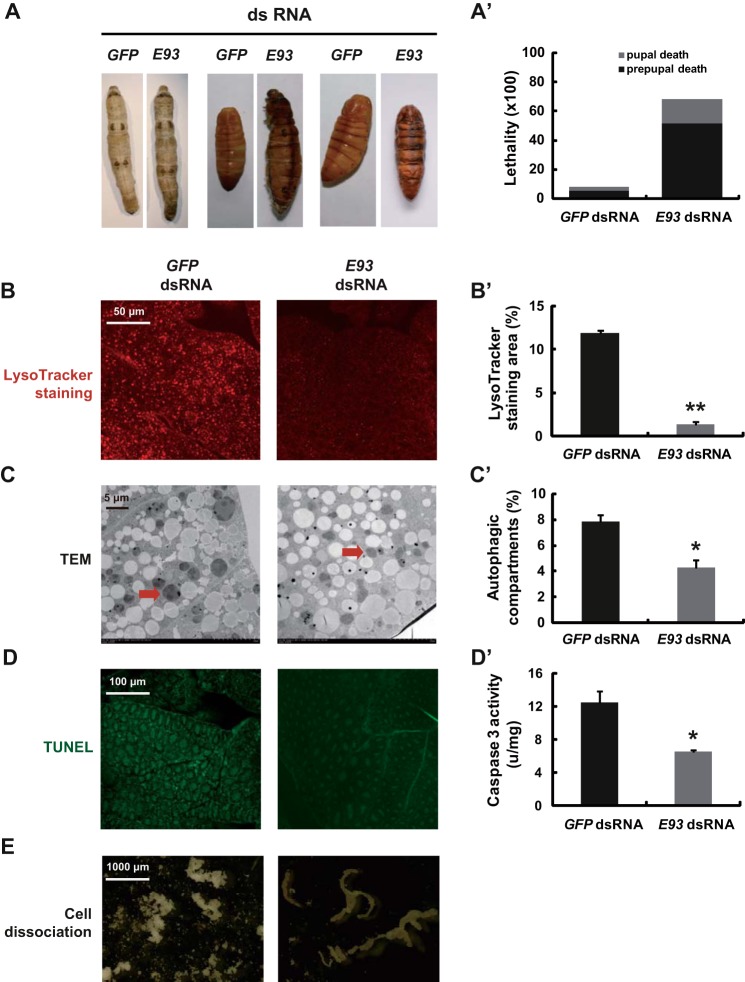FIGURE 4.
E93 RNAi causes lethality and prevents fat body remodeling. dsRNA (30 μg/larva) was injected into staged larvae at the initiation of the wandering stage. GFP dsRNA (30 μg per larva) was used as a control. A and A′, some E93 RNAi treated silkworms died during the wandering stage (A; left panel), some failed to form normal pupae and died as larval-pupal intermediates (A; middle panel), and some arrested at the pupal stage (A; right panel). The chart (A′) shows the quantification of the lethality in A. B and B′, LysoTracker Red staining (red, ×40) in the fat body 24 h after dsRNA treatment. The chart (B′) shows the quantification of LysoTracker Red staining in B. C and C′, TEM analysis (7,500×) 24 h after dsRNA treatment. The red arrow denotes an autolysosome. The chart (C′) shows the quantification of autophagosomes and autolysosomes in C. D and D′, TUNEL labeling (green, ×20) (D) and caspase 3 activity (D′) in the fat body 24 h after dsRNA treatment. E, a comparison of fat body cell dissociation 24 h after pupation.

